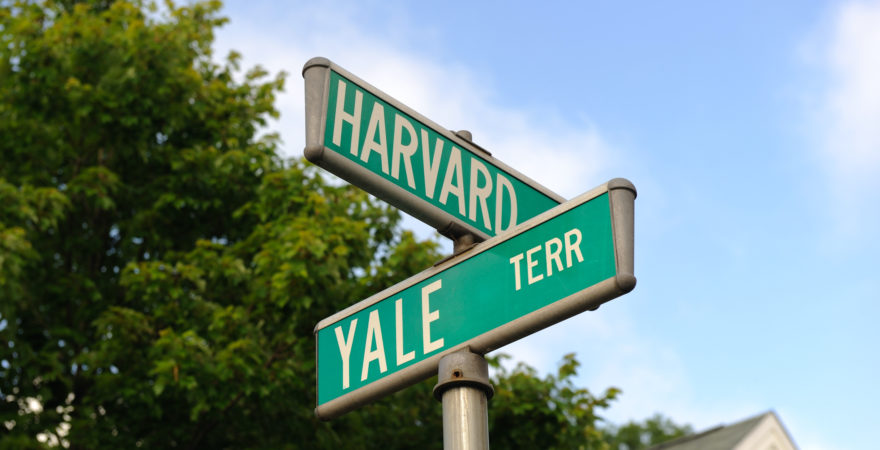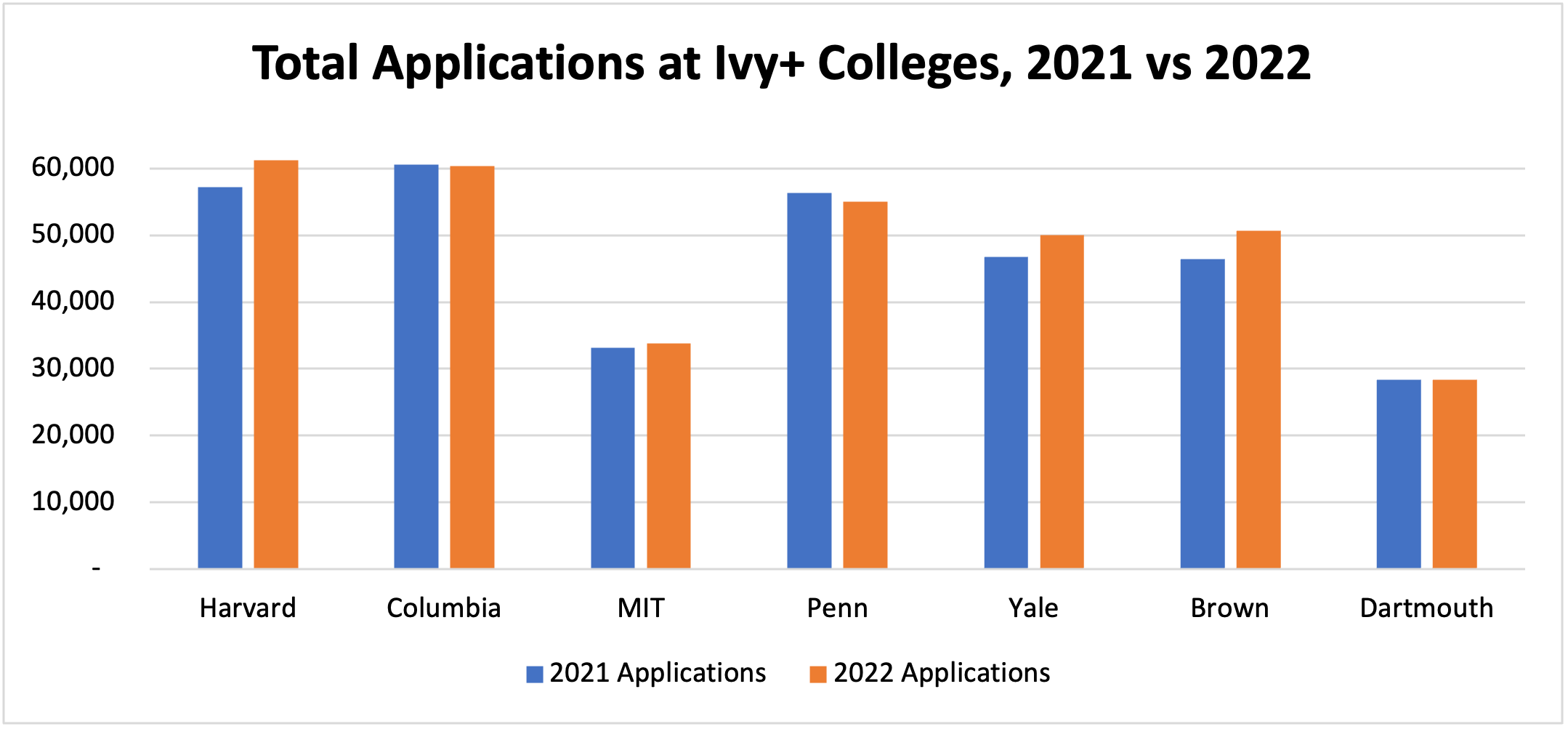- Blog
- > Ivy League Admissions
2022 Ivy Acceptance Rates: Insight Into Admission Trends & Analytics
- Dr. Rachel Rubin
- | April 13, 2022

After the 2020-2021 admissions cycle marked the hardest year ever to gain admission to a top-ranked school, no one quite knew what to expect for the following year. Would the trends hold for the Class of 2026, or would we see a return to pre-pandemic numbers?
We have an answer now. Although applications didn’t rise as much as they did last year, they did hold steady or rise further. On the surface, the gains are modest, but the fact that applications continued to rise at top schools after last year’s astounding increases is significant.
Even More Students Submitted Applications to Ivy+ Schools for Fall 2022 Admission
In 2020-2021, top schools saw increases in applications of 30, 40, even 50 percent, leading to their lowest-ever admission rates. Once again, applications have remained high, with only Dartmouth and Penn seeing a very slight decrease in overall applications (of the schools that reported their total numbers). Brown University saw an almost 10% increase over last year.

Of course, more applications doesn’t mean more spots; if anything, many selective colleges this year had to accept even fewer students than last year, given the pressures on their housing, cafeterias, and other facilities, after a year or two of over-enrollment.
Therefore, these record-high numbers also corresponded to some record-low admission rates, with several already shockingly low rates somehow dropping further this year (with the exception of Dartmouth):
| School | 2021 Admission Rate | 2022 Admission Rate |
| Harvard | 3.4% | 3.19% |
| Columbia | 3.89% | 3.73% |
| MIT | 4.03% | 3.96% |
| Yale | 4.62% | 4.47% |
| Brown | 5.4% | 5.03% |
| Dartmouth | 6.17% | 6.24% |
Why Are Admission Rates Still So Low? Will They Ever Go Back Up?
The biggest culprit of last year’s rise in applications hasn’t left us: the turn to test-optional admissions at top schools. Already, numerous top schools have announced the extension of their test-optional policies, some for only a year, but others (such as Harvard) for multiple years. That alone is likely enough to keep application numbers high.
Further, and somewhat paradoxically, these record-low admission rates are likely to be self-perpetuating. The more uncertainty that exists around who gets into what schools and why, the more applications that students will submit; so, even as the number of discrete applicants across all schools falls, application numbers at individual popular schools will still continue to rise. If colleges don’t increase their class sizes, which they aren’t likely to do, this trend will inevitably produce lower acceptance rates.
Finally, it bears mentioning that these plummeting admission rates are only representative of the most selective schools in the country; the majority of universities continue to accept the majority of applicants, and some are even struggling to fill all the spots they have. These trends are likely to continue furthering the divide between the haves and have-nots of higher education.
What Does This Mean for Next Year?
Whenever anyone predicts that admission rates can’t fall any further at top schools, they end up being proven wrong. So, we won’t do that! Rather, we’ll all just have to wait and see if these trends continue or if they begin to reverse themselves. As the uncertainty of the pandemic (hopefully) lessens, applications could plateau or even fall, but it’s likely to take a few years before we start to see admission rates at top schools rise again—if they ever do.
Here at Spark Admissions, we’re dedicated not only to closely tracking this data, but also to helping students use it to their advantage. Despite the challenges this year, our acceptance rates at top schools remain significantly higher than the national average. If you want to know whether your profile is competitive for an Ivy League school, give us a call!


